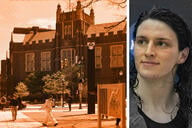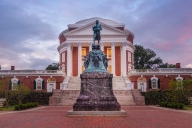You have /5 articles left.
Sign up for a free account or log in.
BOSTON -- Sometimes, solutions come easily. After the University of Texas at Austin started holding study abroad-focused receptions for sophomores receiving Pell Grants, the number of students receiving federally funded Benjamin A. Gilman International Scholarships -- which are only available to students on Pell Grants -- "shot up," said Heather Barclay Hamir, the former director of study abroad at UT Austin and now the president-elect at the Institute for Study Abroad, Butler University. "It was that simple."
Hamir spoke during a session here at the annual NAFSA: Association of International Educators conference focused on increasing the diversity of American students studying abroad. As study abroad participation has increased nationally, the proportion of underrepresented minorities participating has also grown, but slowly -- still, more than three-quarters of Americans studying abroad (76.3 percent) are white, according to the latest data from the Institute of International Education's annual Open Doors survey. Open Doors does not collect data on study abroad participation by family income.
"I think a lot about what's a real barrier and what's a perceived barrier," said Hamir, who classified barriers as generally falling into one of four categories: cultural, institutional, academic and financial. She stressed the need to get to students "before they say, 'I don't have the money,' or before they assume engineers don't go abroad." In addition to the receptions for Pell Grant recipients, UT Austin also invites all first-generation college freshmen to a study abroad reception, said Hamir. She stressed the value of sending a message to students with a scholarship's name, such as in the case of an award at UT Austin called the First Abroad Scholarship.
"That was really powerful, because that's a group that typically doesn't think study abroad is for them. For an institution to say, 'no, we mean you and only you' with this award gave us a way to address cultural barriers around study abroad at the same time we addressed financial barriers," Hamir said.
Another presenter at the session, Beth-Ann Kutchma, a senior program officer at the University of North Carolina at Chapel Hill's Center for Global Initiatives, discussed an effort there called Opening Access and Breaking Barriers to Global Opportunities -- a collaborative initiative that she said involves about 40 different units across campus (a list of partners, including the accessibility office, the LGBTQ center, the diversity and multicultural affairs office, as well as various area and ethnic studies departments and centers, is on the project website).
Kutchma also described a few specific programs, including a new Global Take Off program, a free (donor-funded) "first time abroad" experience for UNC Chapel Hill and Fayetteville State University students with demonstrated financial need. In the first iteration of the program, students will go on a faculty-led educational trip to Puerto Rico for four days over fall break. UNC Chapel Hill also has a Passport to GO! program through which it pays for passports for incoming students with financial need.
Joti Sekhon, the director of international programs and a professor of sociology at Winston-Salem State University, a historically black institution, concentrated her presentation on faculty development efforts. Using federal Title III funds available to historically black colleges, Sekhon said, the university has sent some of its professors on international faculty development seminars organized by the Council on International Educational Exchange (CIEE). Winston-Salem also received a $100,000 National Endowment for the Humanities grant for a faculty development program focused on integrating India into the liberal arts curriculum. The university also sends faculty to the WISE conference on intercultural learning, which is sponsored by Wake Forest University and held in town in Winston-Salem.
Among the results, Sekhon said the CIEE seminars led to new faculty-led study abroad programs in Brazil and China. Study abroad participation has increased from an average of 15 students per year before 2009 to anywhere between 30 and 60 per year since then. "Small numbers," she said, "but for us, it's big."




